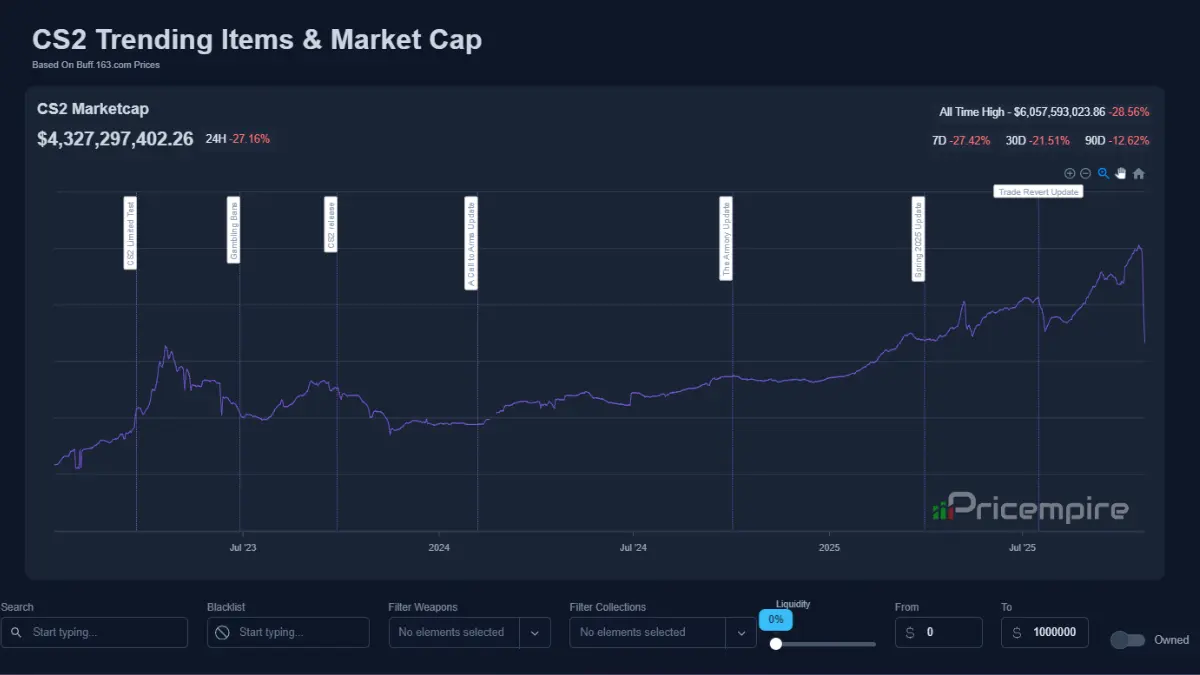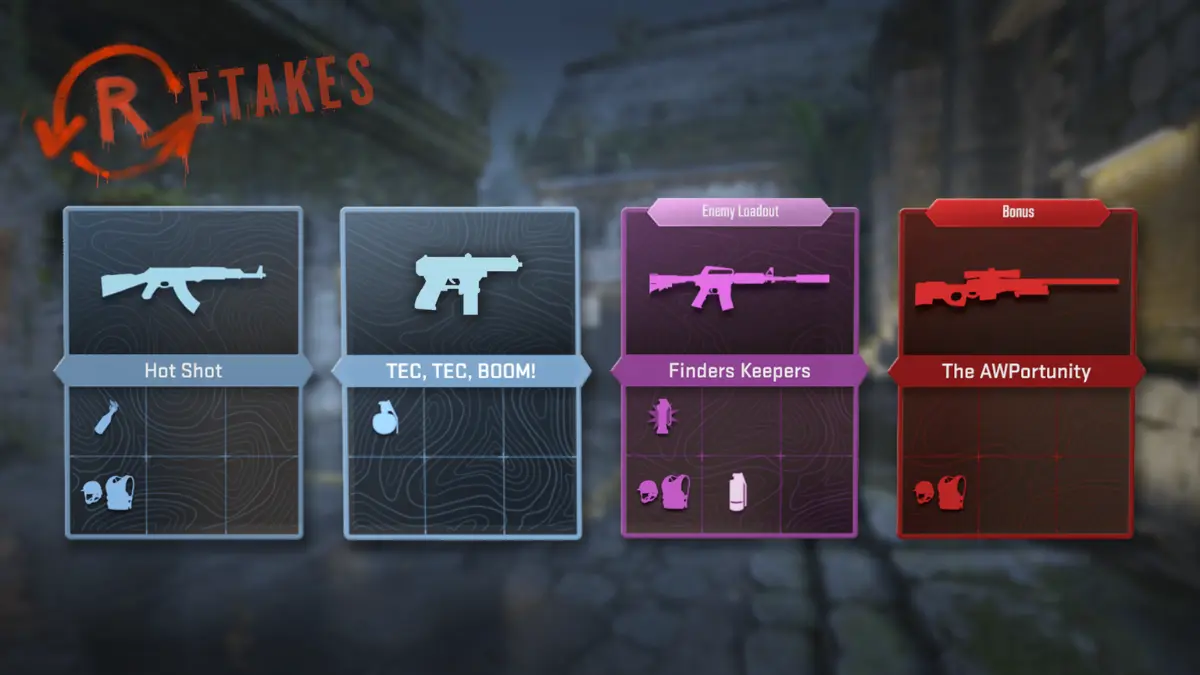Valve dropped a huge update to Counter-Strike 2 that fundamentally rewrote the rules of the game’s multi-billion dollar skin economy. For the first time in the franchise’s history, players can now use Trade Up Contracts to reach the coveted “Rare Special” gold tier—home to knives and gloves.
The change rocked the market. Prices for premium knives plummeted 30–60% within hours as traders scrambled to adjust. Meanwhile, lower-tier Covert skins used as trade-up fodder exploded in value, with some jumping over 2,000% as players raced to craft gold-tier items.
Community trackers estimate roughly $1bn in total value evaporated from the CS2 skin market following the update. That figure comes from third-party marketplace data and remains unverified, but the scale of disruption is undeniable.
Before this update, Trade Up Contracts stopped at the Covert red tier. Knives and gloves could only be obtained by opening weapon cases, where odds hover below 1%. This artificial scarcity pushed some premium knives above $10,000.
The new system lets players combine 10 Covert skins to roll for a gold-tier item from the eligible collections. Standard trade-up rules still apply—you can’t pick a specific knife, but you can manipulate the outcome pool by selecting which collections to use as inputs. Float values from the inputs influence the wear condition of the output.
Functionally, Valve introduced an alternate path to knives and gloves that bypasses pure case-opening luck. Supply pressure increased instantly as traders with stockpiles of red skins rushed to craft golds.
Winners and losers
The update split the community into clear camps. Players seeking accessible knives won big, as did traders holding large inventories of mid-tier Covert skins. One player noted their 50-pound knife purchase from a decade ago is now worth 2,000 pounds—but questioned whether to sell before values drop further.
Holders of ultra-rare knives took the hit. Items that previously commanded five-figure prices due to extreme scarcity saw valuations cut in half. Screenshots circulating in the community showed Butterfly Dopplers and Karambit Fades dropping from $7,000–$12,000 to half those amounts.

Red-tier skins became the new hot commodity. Items previously worth tens or hundreds of dollars now fetch thousands as players buy up trade-up inputs. This demand surge created a secondary boom for case openings, as players hunt for the Covert skins needed to craft golds.
The shift mirrors similar events in Valve’s Dota 2 economy, where a courier that sold for $30,000 lost 75% of its value after a system update 12 years ago.
What happens next
Short-term price chaos will likely settle as the market finds equilibrium. Input skin prices may cool once supply catches up to demand. Top-end knives will find new price floors based on the actual rate players can craft them through trade-ups versus case openings.
Market fragmentation adds complexity. Steam’s Community Market caps transactions at $1,800, forcing high-value trades to third-party sites like Buff163 and Skinport. These platforms allow real-currency cashouts but operate outside Valve’s official ecosystem, creating inconsistent price data across the market.
Valve hasn’t commented on whether the new system is working as intended or if adjustments are coming. For now, the CS2 skin economy is experiencing its biggest shakeup since the game launched.


